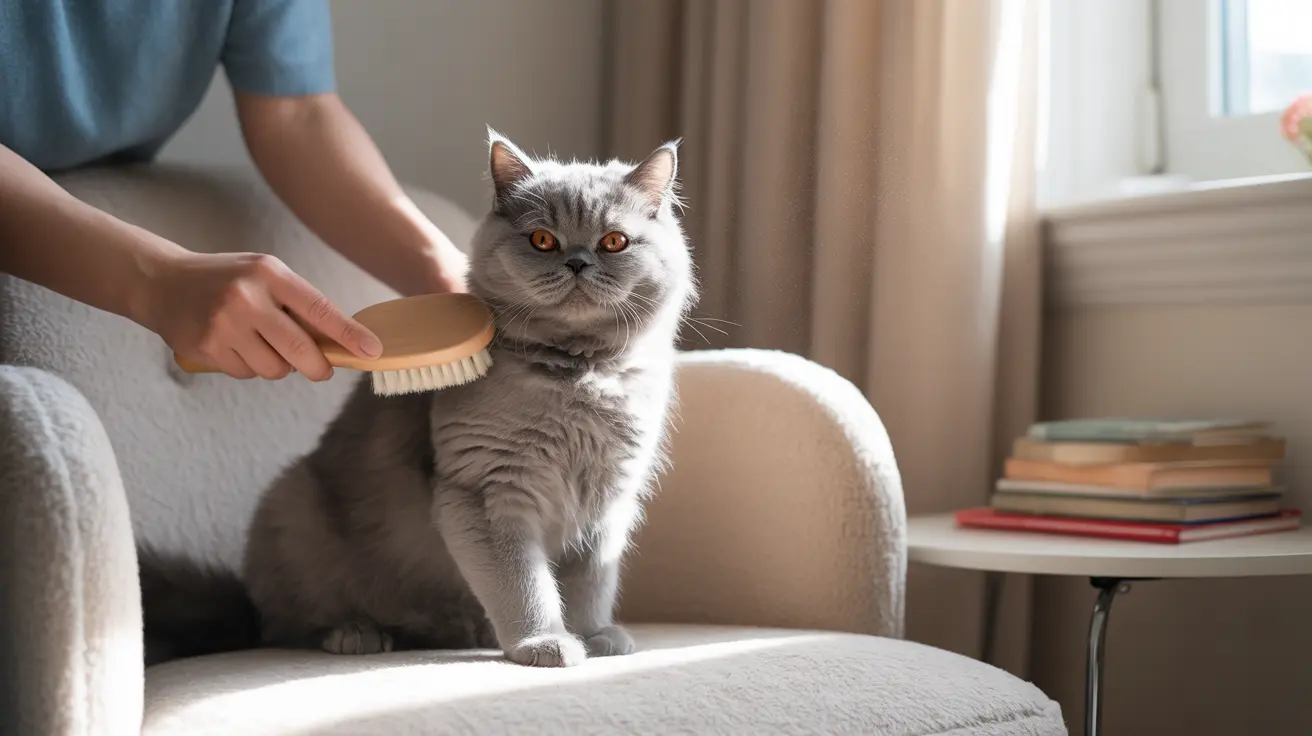Understanding British Shorthair Allergens
British Shorthairs produce the same allergenic proteins, particularly Fel d 1, found in all cats. This protein is present in their saliva, skin cells, and sebaceous glands. When these cats groom themselves, they spread these allergens throughout their dense double coat, which then shed into your environment.
Their distinctive plush coat, while beautiful, actually contains more hair per square inch than many other breeds. This means when they shed, they can distribute significant amounts of allergen-containing dander throughout your home.
Shedding Patterns and Allergen Distribution
British Shorthairs shed consistently throughout the year, with two major seasonal molts in spring and fall. During these peak shedding periods, allergen exposure can increase significantly. Their thick double coat requires regular maintenance to manage loose fur and minimize allergen spread.
Managing British Shorthair Coat Care
To reduce allergen distribution in your home, implement these essential grooming practices:
- Brush your cat 1-3 times weekly, increasing to daily during shedding seasons
- Use appropriate tools like soft-bristle brushes or rubber grooming mitts
- Wipe the coat with a damp microfiber cloth after brushing
- Avoid harsh de-shedding tools that could damage their unique coat texture
Creating an Allergen-Reduced Environment
While you can't eliminate allergens completely, you can take steps to minimize their impact:
- Install HEPA air purifiers in main living areas
- Vacuum frequently with a HEPA-filter vacuum cleaner
- Wash cat bedding and soft furnishings regularly
- Keep your British Shorthair out of bedrooms
- Maintain clean hands and avoid touching your face after handling your cat
Testing Your Allergy Compatibility
Before committing to a British Shorthair, consider these important steps:
- Spend extended time with the specific cat you're interested in adopting
- Visit multiple times to assess your reaction consistency
- Request a trial period if possible
- Monitor your symptoms after direct contact and grooming sessions
- Consult with an allergist about management strategies
Frequently Asked Questions
Are British Shorthair cats hypoallergenic or safe for people with cat allergies?
No, British Shorthairs are not hypoallergenic. They produce the same allergens as other cats and their dense double coat can trap and spread these allergens when they shed.
How does the British Shorthair's dense double coat affect allergy symptoms?
Their thick coat contains more hair per square inch than most breeds, which can collect and distribute more allergens through shedding, potentially increasing exposure and symptoms for allergic individuals.
What grooming and home care steps can reduce allergens from a British Shorthair?
Regular brushing, HEPA air filtration, frequent vacuuming, and maintaining clean bedding can help reduce allergen levels. Consistent grooming 1-3 times weekly is essential.
Can the personality or grooming habits of a British Shorthair influence allergen exposure?
Yes, their generally calm nature and moderate self-grooming habits may result in less allergen spread compared to more active breeds, but they still produce and distribute typical amounts of allergens.
How can allergy sufferers test their reaction to a British Shorthair before adopting?
Arrange multiple visits with the specific cat, spend time in their environment, and if possible, request a trial period. Monitor your reactions during different activities and after extended exposure.
While British Shorthairs make wonderful companions, their non-hypoallergenic nature means allergy sufferers should carefully consider their ability to manage symptoms before committing to this breed. With proper preparation and management strategies, some individuals with mild allergies may successfully share their home with these beautiful cats, but others may need to consider truly hypoallergenic pet alternatives.






